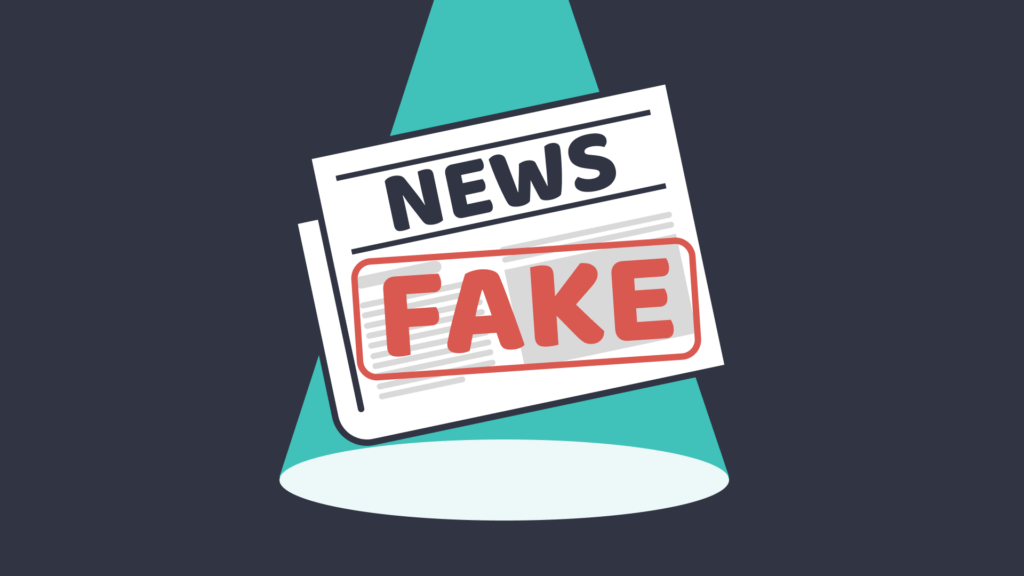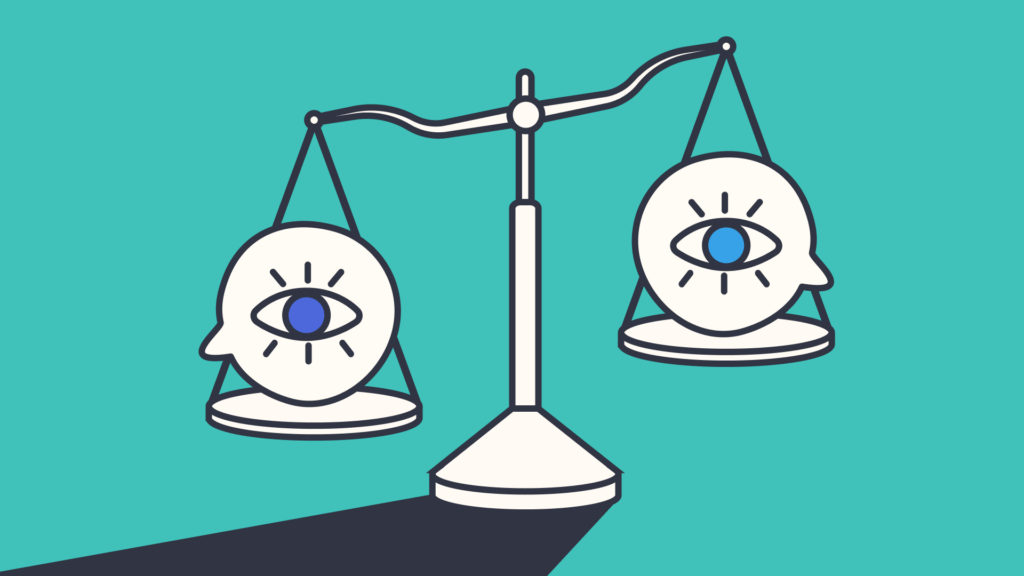4 Creative ways to teach media literacy in the classroom
In this guide
Media literacy is a critical skill in our increasingly digital world. Students are exposed to more constant and continuous streams of information from different sources than at any time in human history.
Media literacy refers to the skills needed to appropriately access and analyze media messages as well as create their own content in a conscientious manner. Students need help developing the ability to navigate a constantly evolving media machine.
Focusing on media literacy in educational settings aims to give students the tools they need to become savvy consumers of information and responsible creators of content.
Why teach media literacy?
I remember being at a conference nearly a decade ago where the keynote speaker asked why schools do not have a class on how to use Google. At first it seemed a little ridiculous but as he continued I became convinced that the topic and required skills are arguably more important than many of the courses students are forced to take each year.
What one generation thinks of as ‘media’ has swiftly moved on from the newspapers and nightly news that was once considered our only sources of media. Media outlets have exploded with the rise of the internet and the number of hours people spend consuming it each day continues to rise.
Misinformation and disinformation are not new concepts but it has never been easier for these falsehoods to spread, and to spread quickly.
Collectively, this means that the role of the media influencing every aspect of our lives is poised to grow exponentially. This is brand new territory and most staff are not properly equipped to make sense of the overwhelming amount of information available to us, let alone to break down, explain and teach these concepts to students.
Media literacy is literacy. Our elections, medical decisions, financial choices, and understanding of others are impacted by how we consume and interpret media. It affects every aspect of our lives. Even our mental health can be caught up in the seemingly endless onslaught of social media.
According to a 2022 study by Media Literacy Now, only 38% of respondents said they learned how to analyze media messaging in school. This is occurring during a time when 72% of individuals believe media literacy skills are important in combating misleading and inaccurate information (Boston University’s College of Communication, 2024).
It is absolutely essential to the sustainability of free and democratic nations to have citizens who are fluent in media literacy. Freedom of speech and press require a population that is able to critically analyze information and consume and interpret it appropriately.
The foundational principles of democracy rely on media literacy in the 21st century so it is imperative that schools prioritize this competency.
How to teach media literacy
Teaching media literacy should not be approached as something that is accomplished in a particular class, unit, or grade level. Instead, a comprehensive media literacy curriculum should extend throughout a student’s entire educational journey and be taught through age and stage appropriate activities.
1) Identifying fake news

One of the initial priorities when teaching media literacy is to introduce strategies to identify and process fake news or misinformation. These terms are both a growing reality and can also be a technique used to label information individuals or groups disagree with.
Determining what is real and what is fake can be exhausting and unfortunately can lead to people checking out when it comes to civic engagement. This is not conducive to a flourishing democratic country.
I use the Get Bad News simulation game to begin class discussions about fake news (disclaimer: the game is recommended for ages 14 and up). It is a fun, yet disturbing, experience that helps students understand the tactics and motivations used by individuals or organizations behind misinformation campaigns.
Once students are emotionally engaged and intrigued by the topic, I suggest showing them What is Fake News? and using the amazing grab and go resources ClickView has to accompany the video. The activities help students develop critical skills to identify fake news in the context of their daily lives.
2) Evaluating different perspectives

This is a quick and easy activity to do at any age and with any subject. The subject matter and parameters can be adjusted based on the age of the students and the curriculum you are teaching.
Start by selecting a topic for students to learn more about. Then, provide them at least two different sources with differing perspectives to evaluate (the sources can be written, video, online, printed, or any combination).
Next, ask students to analyze each source and look for any biases in how the information is presented. Encourage them to focus on keywords, sources used, and visual imagery. It is usually helpful to pair students and let them share their findings with one another.
For younger students, steer away from controversial topics and provide the exact sources to avoid them accidentally stumbling across inappropriate material. Older students should be encouraged to find their own sources and be able to justify how they know different perspectives are being used in each.
This is my favorite activity to use in history and government courses because it is an easy way to include current events while also building their media literacy skills.
3) Crash Course media literacy series
The Crash Course media literacy videos on ClickView are a great way to build lessons and activities for middle and high school students.
The first video in the series is perfect for introducing the topic, especially if this is their first time learning about media literacy. After viewing, stimulate a discussion where students share their feelings, perceptions, and skills surrounding media. This will yield a lot of insight into the specific needs and wants of your students.
The Media Ownership video is especially useful in government and economics courses. Develop the lesson by asking students how social media companies are changing their national narratives and influencing politics.
If you have the time, assign different social media platforms to groups of students to conduct research on a variety of businesses. Ask students to identify the owner(s) of the companies, the number of users/viewers, annual revenue, and how the company generates money.
4) Analyzing advertisements

Students are constantly being marketed to whether they realize it or not. Ads are seamlessly embedded into social media posts, TV shows, YouTube clips and news websites. Even with a trained eye it can be challenging to distinguish informational content from paid advertisements, and this is even before you find yourself stuck in a doom spiral of information! Begin by searching for past American presidents and 5 minutes later you somehow find yourself shopping for rabbit harnesses!
This is a really fun activity to use in class because it applies to a wide variety of subjects and can be modified to work with most age groups. I use this in my history classes to help understand how social norms have changed overtime through the representation of different population groups seen in ads.
Depending on the age of the students and the course you are teaching you may need to provide some background information before asking students to complete the activity. The following ClickView videos are a perfect place to start:
Once students are comfortable with the foundational terms and basic advertising techniques, get them into groups and have them locate 3 unique advertisements (online or print). Ask students to analyze each ad using the following questions:
- Who is the target audience? How can you tell?
- What persuasive techniques are being used?
- What is the overall message and tone of the ad?
- Does the ad use any underlying biases or stereotypes?
- How effective do you think the ad is at persuading viewers?
When groups are finished, ask for volunteers to share their findings with the rest of the class. You can also extend this by selecting specific topics or techniques for students to look for over the next few days during their normal activity.
Note: This activity also works great in government or civics classes, especially during election season.
Media literacy is only going to become more important. It is vital that teachers upskill themselves so that they can, in turn, arm their students with the skills they will need to navigate this increasingly digital realm.
References
- Lee, H., & Greenfield, W. (2023, May 31). National Survey Finds Most U.S. Adults Have Not Had Media Literacy Education in High School. Media Literacy Now. Retrieved September 5, 2024, from https://medialiteracynow.org/nationalsurvey2022/
- Media literacy skills important to counter disinformation, survey says. (2024). Boston University. Retrieved September 5, 2024, from https://www.bu.edu/com/articles/media-literacy-skills-important-to-counter-disinformation-survey-says/

Nick Schwab
briefcase iconLearning Experience Designer
Nick combines his background in psychology, education and design to create physical and digital experiences that empower, engage, and excite learners. His passion lies in constantly developing new learning pathways for students that challenge the status quo in education.
Other posts
Want more content like this?
Subscribe for blog updates, monthly video releases, trending topics, and exclusive content delivered straight to your inbox.












